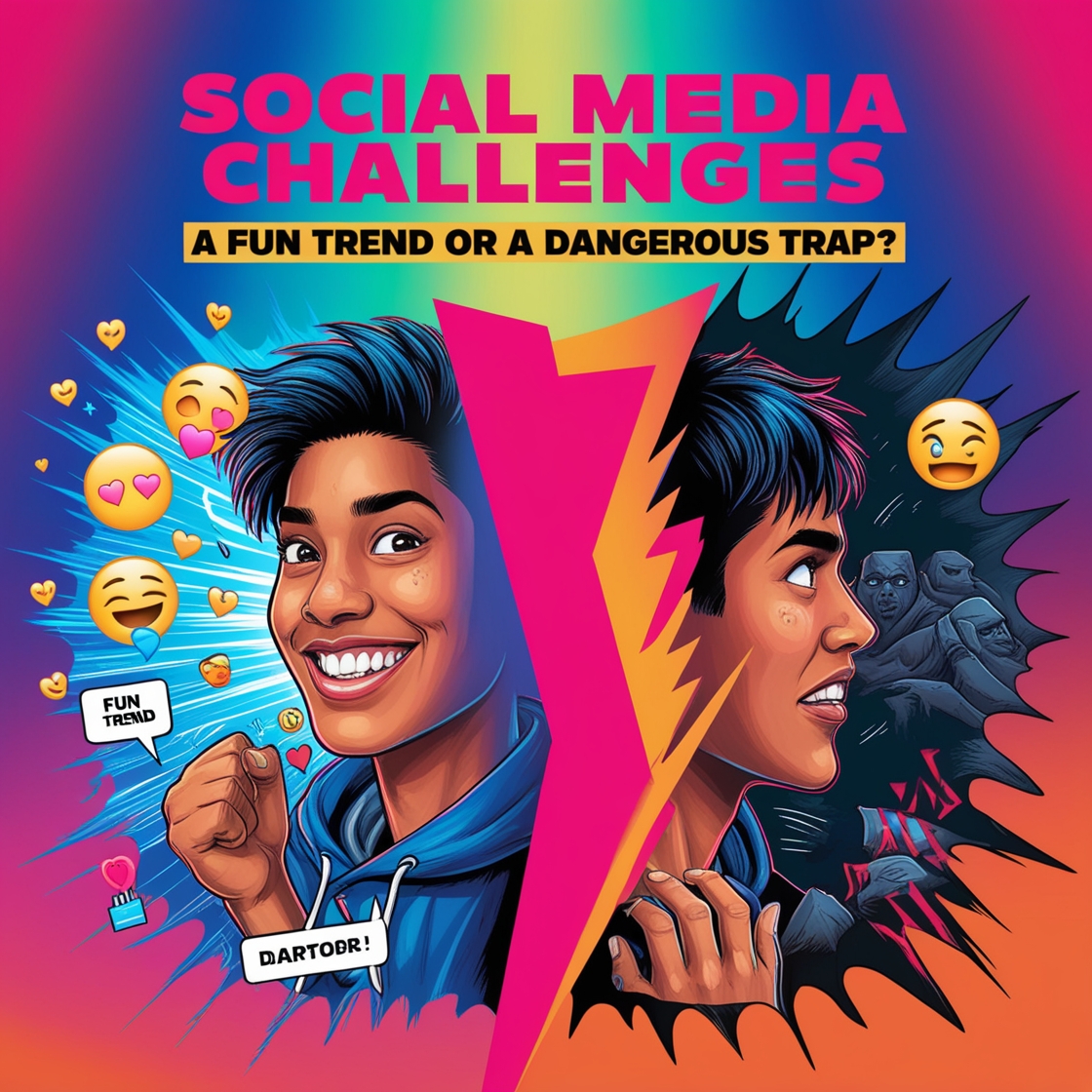Introduction
Social media challenges have taken the digital world by storm, drawing millions into participating in quirky and entertaining trends. From dance challenges to fitness feats, these challenges seem like the perfect way to stay connected and engage with friends. But not every challenge is as innocent as it seems. Some trends that start as fun can escalate into dangerous situations, raising the question: Are social media challenges a fun way to bond or a hidden trap waiting to spring?
The Rise of Social Media Challenges
Challenges have grown hand in hand with platforms like TikTok, Instagram, and YouTube. What begins with a few daring participants quickly spreads like wildfire, thanks to hashtags and viral content. Whether it’s #IceBucketChallenge or #BottleCapChallenge, these trends thrive on mass participation and community spirit.
Why People Love Social Media Challenges
There’s something intoxicating about joining the latest trend. Social media taps into our psychological need for connection, approval, and belonging. People love challenges because they offer:
- Validation and social acceptance: Getting likes, shares, and comments feels like a reward.
- FOMO (Fear of Missing Out): Nobody wants to be left out of what everyone else is doing.
- The chance to go viral: A video with thousands of views can give a fleeting sense of fame.
Fun and Positive Aspects of Challenges
Not all challenges are bad. Many encourage creativity, fitness, and even charitable acts. Here are a few ways these trends have a positive impact:
- Fitness and dance challenges: Trends like the 30-day fitness challenge motivate participants to stay active.
- Community bonding: People connect over shared experiences, especially during global events like the pandemic.
- Fundraising and awareness campaigns: Challenges like the Ice Bucket Challenge raised millions for ALS research.
The Dark Side: Dangerous Social Media Challenges
Unfortunately, some challenges go too far. Over the years, several dangerous trends have emerged:
- Tide Pod Challenge: Participants bit into detergent pods, leading to poisonings.
- Benadryl Challenge: Teens overdosed on allergy pills for a hallucinatory effect, with tragic results.
- Cinnamon Challenge: People tried swallowing a spoonful of cinnamon, often choking or damaging their lungs.
These harmful trends highlight how peer pressure can push people, especially teenagers, into risky behavior.
The Psychology Behind Risky Participation
Adolescents are naturally drawn to risk. Their brains crave excitement, and dopamine—the “feel-good” hormone—plays a big role in motivating risky actions. Social media challenges offer immediate rewards in the form of likes and shares, making them even more tempting.
Parental Concerns and Safety Measures
Parents often feel helpless in the face of dangerous online trends. However, there are ways to protect children:
- Monitoring online activity: Keep an eye on what children are watching and sharing.
- Open conversations: Talk about the potential dangers of participating in risky challenges.
- Setting boundaries: Limit screen time and encourage offline activities.
The Role of Social Media Platforms
Social media platforms have a responsibility to keep users safe. They must act quickly when harmful trends emerge:
- Reporting tools: Users can report dangerous content, prompting platforms to take action.
- Content moderation: Platforms like TikTok have started removing harmful videos to protect users.
Success Stories: How Platforms Took Action
Some platforms have taken a proactive approach to curb dangerous trends. For example, TikTok restricted search results for certain challenges and promoted safety messages. YouTube has banned videos promoting harmful challenges, setting an example for others to follow.
Legal and Ethical Issues Surrounding Social Media Challenges
Who is responsible when a challenge goes wrong? In some cases, social media platforms or content creators may face legal scrutiny. There are ongoing debates about the ethical boundaries of promoting risky behavior online.
How to Engage Safely in Social Media Challenges
The key to enjoying social media challenges is responsibility. Stick to fun, creative trends that pose no harm to yourself or others. Always think twice before joining a trend—if it feels dangerous, it probably is.
Influencers’ Role in Promoting Safe Trends
Influencers have the power to steer their followers toward positive behavior. By promoting safe challenges, they can encourage responsible participation and reduce the spread of harmful trends.
The Future of Social Media Challenges
Social media challenges will likely continue to evolve, with more emphasis on creativity and entertainment. However, there may also be increased regulation as platforms and governments work to prevent harm.
Conclusion
Social media challenges are a double-edged sword. While many are fun and foster community spirit, others can lead to serious consequences. It’s essential to approach these trends with caution and make informed decisions. Enjoy the fun, but don’t fall into the trap of risky behavior.
FAQs
- What are the most popular social media challenges today?
Current trends include dance routines, fitness challenges, and humorous challenges like #FlipTheBottle. - Are there any laws regulating social media challenges?
While no specific laws exist for challenges, platforms have policies against harmful content, and legal action can be taken in cases of injury or harm. - How can parents protect kids from dangerous trends?
Parents can monitor online activity, set limits on screen time, and have open discussions about social media risks. - Which social media platforms are the safest?
Platforms with strong content moderation, like TikTok and Instagram, are relatively safer but require user vigilance. - Can influencers be held responsible for promoting risky challenges?
In some cases, influencers promoting harmful trends may face backlash or legal action.
